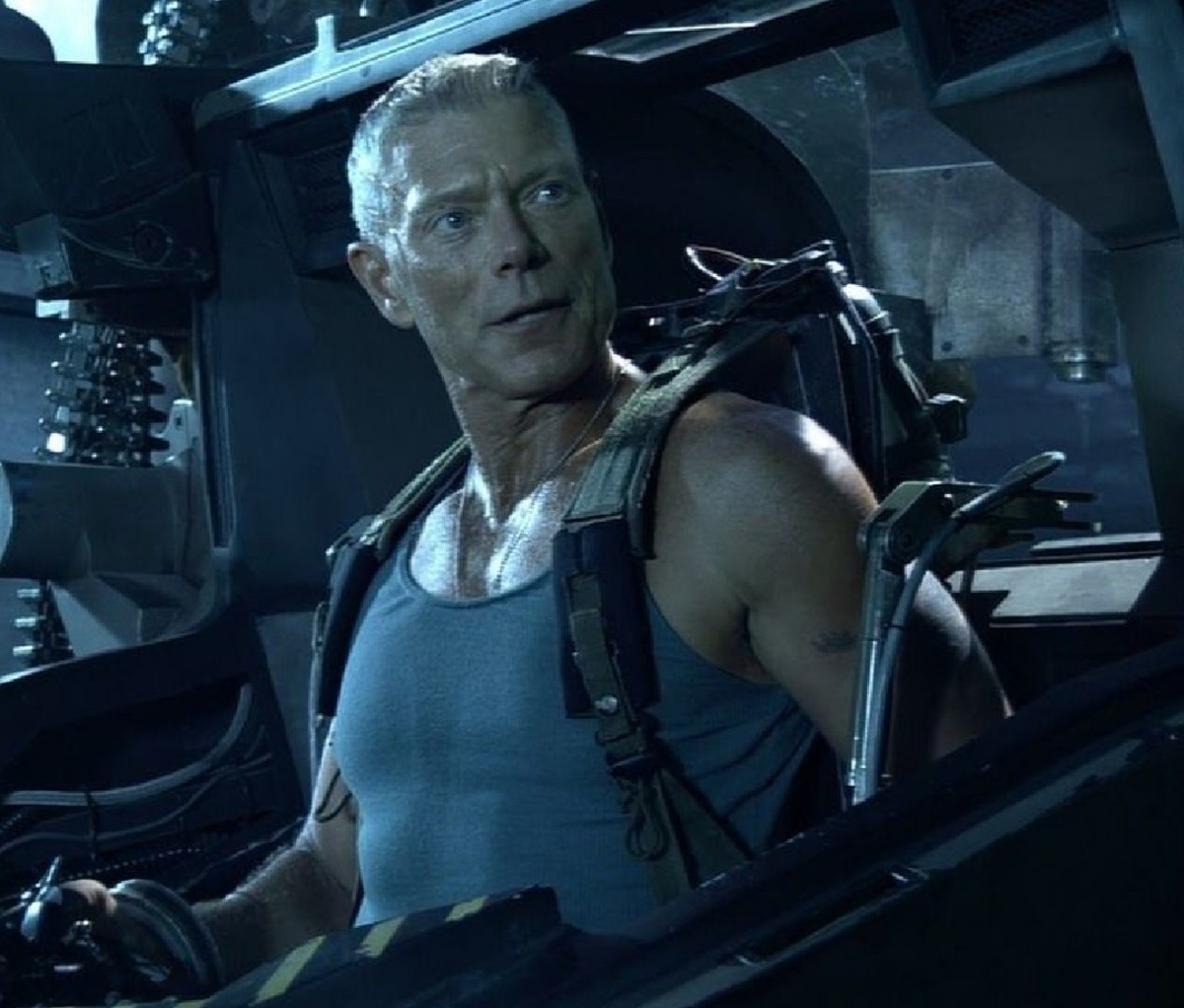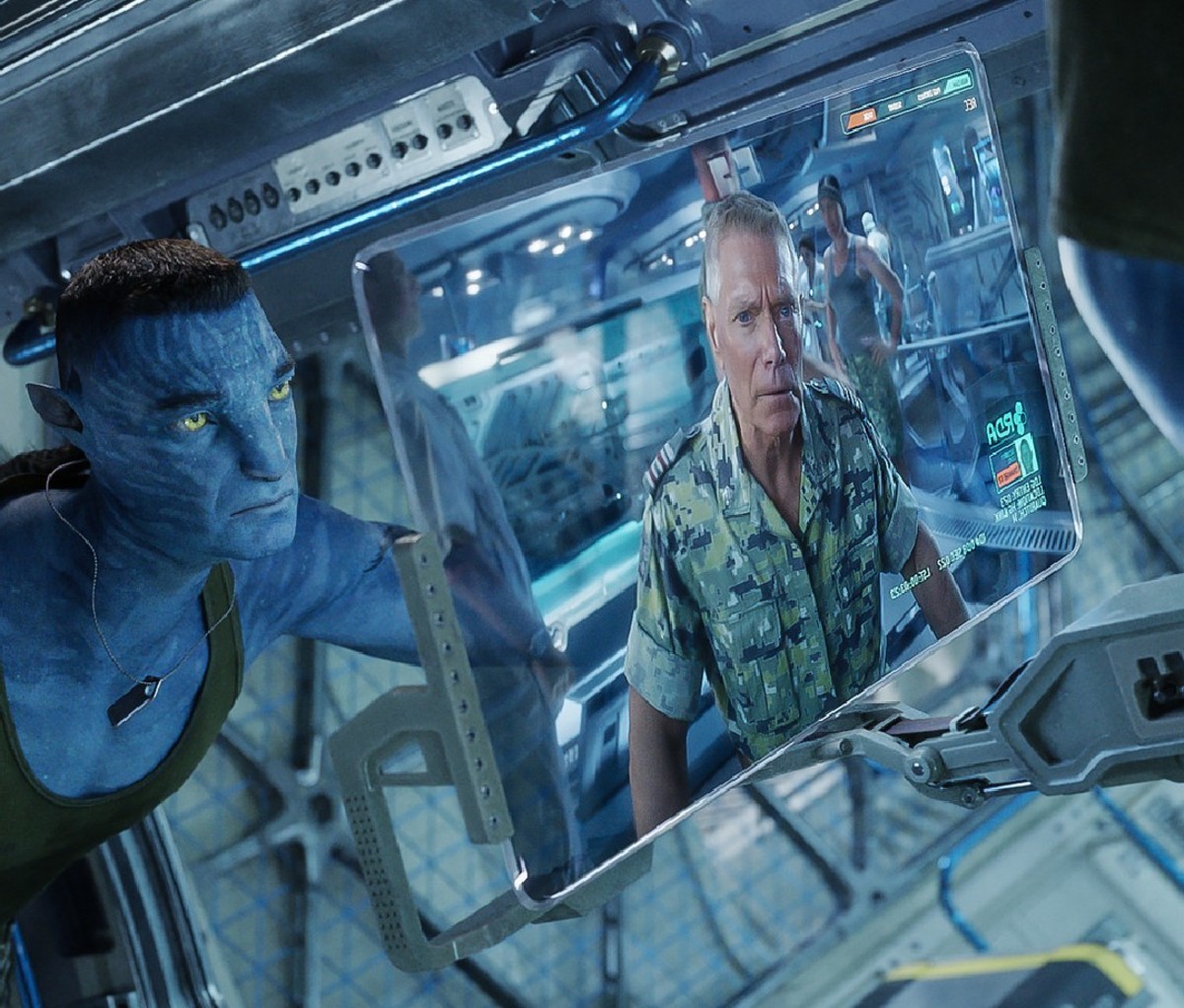Stephen Lang wanted to make an impression when he first took the screen in James Cameron’s Avatar as Colonel Miles Quaritch, the main antagonist and commander in the heavily armed RDA Security Operations. For months before filming the movie with Cameron, he lifted heavy at his local gym in upstate New York, putting on around 35 pounds of muscle in his mid-50s. The work paid off, and when we first see Quaritch bench pressing in the Pandora base’s weight room, there’s no question he’s someone you’d follow into battle.
Lang continues to defy his age and train hard, though his methods diversified while training to play a resurrected Colonel Quaritch in the follow-up to the 2009 box office juggernaut. Men’s Journal spoke with the actor about his personal journey with fitness, martial arts, and working underwater in Avatar: The Way of Water.

Men’s Journal: Did you pay attention to your fitness and health early on in your life?
Stephen Lang: I lived my youth bulletproof and immortal. I’m talking about the ‘70s here. I was a good athlete, but wouldn’t say I was a great one. I was always a bit of a gym rat through high school and college. Weights were a constant part of my life. But I was one of those guys who used the gym without really knowing what I was doing. Then as I got older, I had moments where I realized that I wasn’t immortal anymore. I remember one day I was playing basketball and I hurt my ankle, which was a serious wake-up call.
That’s when I turned to karate, which healed my ankles. I first stepped into the Mercer Street dojo, just walked in off of the street back in 1982. We practiced the Kyokushin Kan [stand-up, full contact karate], which was started by Mas Oyama. I studied there for about a decade. Karate is a very unique practice. The deeper you get into your study, the more responsibility you have to the dojo. The majority of people in that room were working wherever they could to support their ability to study and live karate.
How long did you seriously study karate?
Personally, I was doing karate to make me a better person and a more physical actor. I remember speaking with Sensei Kishi, who is legendary to a lot of people, and I had to explain to him that even though he was riding my ass I wasn’t going to be able to participate like he wanted. The only way I could think to explain to him in a way that he would understand was to tell him what karate was to him, acting was to me. That he understood. Once we moved to upstate New York, it didn’t seem worth it for me to find another dojo, because your dojo is your home. Finding another one is not easy. I was ready to move on at that point.
I still kept the warmups. There are some breathing techniques and rotating exercises that I would incorporate into my routines. There are two ideas in karate. One is kata, which I love. I’m back into that even more now. The other is kumite—the sparring you’re supposed to participate in. That was never really going to serve me, and I had no interest in getting injured, especially when I was working. So I had to step away from that.

Let’s talk about how James Cameron first discovered you to play Colonel Quaritch in Avatar.
I was doing my solo show Beyond Glory, which is a military play, when Avatar came along. I was already in shape so that I could do that, because it’s just me up there the whole time and I had to look that part. Beyond Glory made its way to Broadway around 2007, and there were quarter-page ads of me looking like a badass military dude in a sleeveless tee shirt in The New York Times. Margery Simkin, who was James Cameron’s casting director, saw the ad and mentioned to him that I could make a great Colonel Quaritch. Jim actually already knew of my work, and had almost cast me in Aliens.
So from there I got the call that Cameron wanted to meet me. I was doing my play, and the last show of the week was at 3 in the afternoon on Sunday. They sent a plane ticket and a car to pick me up after that show to fly me to Los Angeles. They put me up at The Georgian on Ocean Boulevard and I was set to meet Jim the next day at his house in Malibu.
I must have done a thousand pushups that night. I would do a few hundred, get into bed, and lie there until I thought I could probably do a few hundred more. I got to his house and we just started to run scenes in his kitchen. A few hours later, we were done. I handed back the script, which had my name on it, and headed out. I felt pretty good on my way to the airport, and my phone was buzzing, but I didn’t want to answer it. I knew that I had it, but I also knew it was possible for whatever reason that I didn’t get it. I didn’t check my phone until I was back in New York, and that’s when I knew it for real.
So what were your next steps from there?
From that moment, it was time to get into the shape I wanted to be in for the role. It was about getting big. Jim wanted Quaritch to be massive. He said, “Get as big as you can. Then get bigger.” So I took the training to a whole new level. I was living up in Bedford Hills. I started going to the Saw Mill Club where I had a great trainer, Doug, who got me deep into compound training. I was training hard from about 2007 to 2010.
“Get as big as you can. Then get bigger.”
I also needed a trainer because I needed a spotter. I was working with weight that I hadn’t hit before. I was regularly benching 240 pounds, which was up there for me. I also didn’t want to use anything even slightly unnatural to get there. I wasn’t going to use human growth hormone. I didn’t want to become a juicer. I remember getting some sort of over-the-counter green goblin juice that wreaked havoc on my system. But that’s about it. I just worked hard and it worked.
That first scene where you meet Sam Worthington’s Sully while finishing a set in the weight room, then hopping in a mech in Avatar is classic.
I remember when I first walked into that scene I saw our production designer had just a couple plates on the bar. I looked at the guy and said, “That’s all you’re putting on there? I want to be moving some weight.” So we got some more plates on there. I wanted it to look like we were doing 300 pounds or so. We probably ended up with somewhere around 150 pounds on there. That starts to become a lot when you’re repeating those reps over and over again for multiple takes—but that’s who the character was. I wanted to feel like I’d be able to impose my ideals in that character. I’m actually impressed at how big I got. I usually walk around at 155 pounds, and I was walking around at 190 or more.
Being that big probably wasn’t sustainable when you wrapped on Avatar after those three years. How did your training evolve after that?
I didn’t know at the time that I’d gotten tight everywhere. I was in rugged shape. I couldn’t bring my left arm above my head. Don’t get me wrong, I was strong, but in a way I was brittle. That’s when a wonderful trainer, Jade Alexis, who worked at the gym I was going to, took me to my first hot yoga class. I wasn’t training with her, we were more like training partners, but I went to do a squat thrust and I pretty much collapsed. She told me that I needed to come with her to do yoga. I was against it at first, but she convinced me to show up the next morning.
I was 10 minutes into that hot yoga session and I was absolutely dying. It was 108 degrees in there and at 85 percent humidity. I was pissed how much it sucked and how much I sucked at it. I said I wasn’t going to come back, but the next day I was there again.
Now it’s been about 13 years of me doing it. I did it this morning and I did it yesterday. The only time I don’t do it is when it’s a really conscious decision and I’m not able to because of extenuating circumstances. I can honestly say that yoga saved my life. The great thing about 26 and 2 yoga [aka Bikram yoga, which is a sequence of 26 postures with 2 breathing exercises] is how technical it is. I’ve heard it called “mechanical engineering for the body.” It isn’t overly spiritual, but when you’re doing it and in the flow, it does become some sort of spiritual practice.
So since Avatar came out, my life has been this cool balance of weight training and yoga. These two meet right in your core—or your Hara as the Japanese call it.
More than a decade later, you’re back as Colonel Quaritch, who’s been resurrected in what’s called a recombinant. The role is, in essence, motion capture but you did everything. What was this prep work like?
The training for the original Avatar was pretty straightforward, hitting the weight training hard. This was a lot different. This was parkour, archery, knife fighting, taekwondo, staff fighting, and swimming. I did everything to the best of my ability. There wasn’t any vocalized brief on how I needed to look, but my personal brief for when I walked on that stage was that I wanted people to have to give respect when I walked up. I want everyone else to feel bad about themselves. That’s the Quaritch persona.
There’s an added element to this when you’re wearing those performance capture suits. It doesn’t leave much to the imagination. I viewed that as my uniform. There was no way I was going to go into the studio, put on that skintight suit, and not still look like the Colonel in some way.
Given the title, it’s no surprise there are a lot of underwater scenes, which you guys filmed while submerged. How difficult was that?
I’ve been a certified scuba diver for the last 20 years. The character doesn’t love fighting in the water when he doesn’t have to. He’d rather bring the battle to the land or air. But I still trained alongside everyone else and got fairly adept at doing the free diving. I really improved my breath-hold time over those months and got up to five minutes doing a static hold. Of course, when you have to fight and act under water, that cuts down the time a bit.
Did you do anything to stay in shape while you were on set filming for those long days?
On set, I’d have the camera crew put down their gear and do pushups with me. I had them do three-finger pushups all the way to me doing one-finger pushups. That was the Colonel in me—keeping those around me dialed in and always ready.
Avatar: The Way of Water is now playing in theaters.
Avatar is now playing on Disney+
from Men's Journal https://ift.tt/uZjLG9z






0 comments